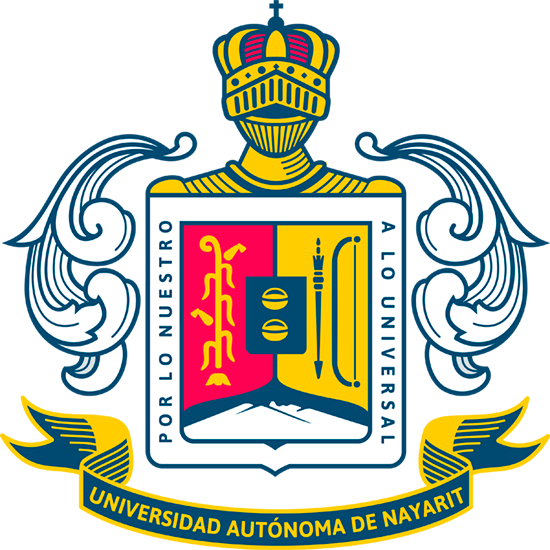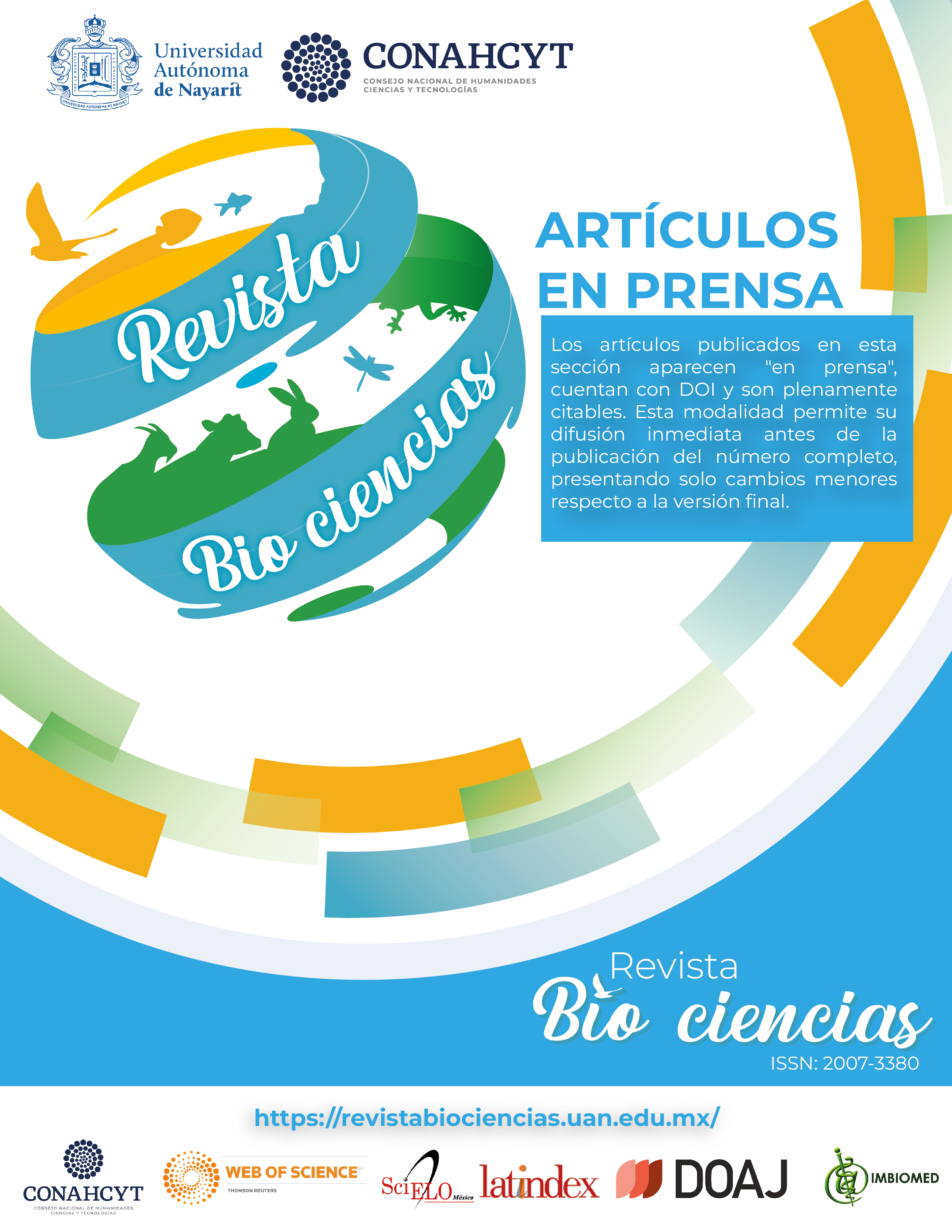Abstract
This study evaluated the phytochemical, antioxidant, anti-inflammatory, and anti-arthritic properties of a hexane extract from Papaver somniferum L. seeds. Qualitative and quantitative phytochemical analyses were performed, including spectrophotometric assays to determine the total phenolic, flavonoid, tannin, and anthocyanin content. Antioxidant activity was assessed using DPPH, ABTS, and FRAP methods, yielding values of 12.40 mg TE/g DW, 82.48 % inhibition, and 2.95 mg TE/g DW, respectively. In vitro models were applied to determine anti-inflammatory activity (erythrocyte membrane stabilization) and anti-arthritic activity (protein denaturation inhibition), with inhibition percentages above 80 %. FT-IR analysis confirmed the presence of functional groups characteristic of lipophilic metabolites. Despite the hexane limitations as a solvent for polar compounds, the results suggest that the hexane fraction retains significant bioactivity, likely due to lipophilic secondary metabolites. These findings support the therapeutic potential of non-polar extracts from P. somniferum and encourage further study using advanced characterization techniques.
References
Ahmed, S. A., Shaker, S. E., & Shawky, H. (2022). Solvent polarity dictates the anti-inflammatory potency and mechanism of two purslane (Portulaca oleracea) seed extracts. Journal of food biochemistry, 46(10), e14281. https://doi.org/10.1111/jfbc.14281
Ambriz-Pérez, D. L., Leyva-López, N., Gutierrez-Grijalva, E. P., & Heredia, J. B. (2016). Phenolic compounds: Natural alternative in inflammation treatment. A Review. Cogent Food and Agriculture. 2: 1131412. https://doi.org/10.1080/23311932.2015.1131412
Arzola-Rodríguez, S. I., Muñoz-Castellanos, L. N., López-Camarillo, C., & Salas, E. (2022). Phenolipids, Amphipilic Phenolic Antioxidants with Modified Properties and Their Spectrum of Applications in Development: A Review. Biomolecules, 12(12), 1897. https://doi.org/10.3390/biom12121897
Benzie, I. F. F., & Strain, J. J. (1996). The Ferric Reducing Ability of Plasma (FRAP) as a Measure of “Antioxidant Power”: The FRAP Assay. Analytical Biochemistry, 239(1), 70–76. https://doi.org/10.1006/abio.1996.0292
Brand-Williams, W., Cuvelier, M. E., & Berset, C. (1995). Use of a free radical method to evaluate antioxidant activity. LWT - Food Science and Technology, 28(1), 25–30. https://doi.org/10.1016/S0023-6438(95)80008-5
Butnariu, M., Quispe, C., Herrera-Bravo, J., Pentea, M., Sarac, I., Küşümler, A. S., ... & Cho, W. C. (2022). Papaver plants: current insights on phytochemical and nutritional composition along with biotechnological applications. Oxidative medicine and cellular longevity, 2022(1), 2041769. https://doi.org/10.1155/2022/2041769
Cimpoiu, C., Cristea, V.-M., Hosu, A., Sandru, M., & Seserman, L. (2011). Antioxidant activity prediction and classification of some teas using artificial neural networks. Food Chemistry, 127(3), 1323–1328. https://doi.org/10.1016/j.foodchem.2011.01.091
Colina Ramos, A. C. (2016). Análisis fitoquímico, determinación cualitativa y cuantitativa de flavonoides y taninos, actividad antioxidante, antimicrobiana de las hojas de “Muehlenbeckia hastulata (J.E.Sm) I.M. Johnst” de la zona de Yucay (Cusco) [Tesis, Universidad Nacional Mayor de San Marcos Facultad de Química e Ingeniería Química]. PDF. https://hdl.handle.net/20.500.12672/7121
Díaz, M., Cazaña Martínez, Y., Pérez Hernández, Y., Valdivia Ávila, A., Prieto Abreu, M., & Lugo Morales, Y. (2015). Evaluación cualitativa de metabolitos secundarios en extractos de variedades e híbridos de Morus alba L. (morera). Revista Cubana de Plantas Medicinales, 20(3). http://scielo.sld.cu/scielo.php?script=sci_arttext&pid=S1028-47962015000300010&lng=es&tlng=es
Felix-Sagaste, K. G., García-Armenta, E., Freyre-Fonseca, V., Bastidas-Bastidas, P., Picos-Corrales, L. A., Cruz-Carrillo, M. A., & Amador-Espejo, G. G. (2024). Identification of compounds present in lipophilic extracts from Brachystola magna (Girard): substances with potential healing properties. Natural product research, 38(4), 639–643. https://doi.org/10.1080/14786419.2023.2180637
Forfang, K., Zimmermann, B., Kosa, G., Kohler, A., & Shapaval, V. (2017). FTIR Spectroscopy for Evaluation and Monitoring of Lipid Extraction Efficiency for Oleaginous Fungi. PloS one, 12(1), e0170611. https://doi.org/10.1371/journal.pone.0170611
García-Granados, R.U., Cruz-Sosa, F., Alarcón-Aguilar, F.J., Nieto-Trujillo, A., & Gallegos-Martínez, M.E.. (2019). Análisis fitoquímico cualitativo de los extractos acuosos de Thalassia testudinum Banks ex Köning et Sims de la localidad de Champotón, Campeche, México, durante el ciclo anual 2016-2017. Polibotánica, (48), 151-168. https://doi.org/10.18387/polibotanica.48.12
Ghasemzadeh, A., & Ghasemzadeh, N. (2011). Flavonoids and phenolic acids: Role and biochemical activity in plants and human health. International Journal of Biological Macromolecules, 93(Pt A), 1448–1459. https://www.researchgate.net/publication/266585165_Flavonoids_and_phenolic_acids_Role_and_biochemical_activity_in_plants_and_human#:~:text=Phenolic%20acids%20and%20flavonoids%20also,The%20flavonoid%20biosynthetic%20pathway.
Gulcin, İ., & Alwasel, S. H. (2023). DPPH Radical Scavenging Assay. Processes, 11(8), 2248. https://doi.org/10.3390/pr11082248
Hari, N., & Nair, V. P. (2018). FTIR spectroscopic analysis of leaf extract in hexane in Jasminum azoricum L. Recent Research in Science and Technology, 4(8), 170-172. https://www.researchgate.net/publication/330039394_FTIR_Spectroscopic_Analysis_of_Leaf_Extract_in_Hexane_in_Jasminum_Azoricum_L
Johnson, T. A., Sohn, J., Inman, W. D., Bjeldanes, L. F., & Rayburn, K. (2013). Lipophilic stinging nettle extracts possess potent anti-inflammatory activity, are not cytotoxic and may be superior to traditional tinctures for treating inflammatory disorders. Phytomedicine: international journal of phytotherapy and phytopharmacology, 20(2), 143–147. https://doi.org/10.1016/j.phymed.2012.09.016
Justo, O. R., Simioni, P. U., Gabriel, D. L., Tamashiro, W. M., Rosa, P.deT., & Moraes, Â. M. (2015). Evaluation of in vitro anti-inflammatory effects of crude ginger and rosemary extracts obtained through supercritical CO2 extraction on macrophage and tumor cell line: the influence of vehicle type. BMC complementary and alternative medicine, 15, 390. https://doi.org/10.1186/s12906-015-0896-9
Kedare, S. B., & Singh, R. P. (2011). Genesis and development of DPPH method of antioxidant assay. Journal of food science and technology, 48(4), 412–422. https://doi.org/10.1007/s13197-011-0251-1
Khoddami, A., Wilkes, M. A., & Roberts, T. H. (2013). Techniques for Analysis of Plant Phenolic Compounds. Molecules, 18(2), 2328-2375. https://doi.org/10.3390/molecules18022328
Kulshreshtha, A., & Ranawat, M. S. (2022). Secondary metabolites extraction using potent biologicals & phytochemical screening. https://doi.org/10.56557/upjoz/2022/v43i12881
Labanca, F., Ovesnà, J., & Milella, L. (2018). Papaver somniferum L. taxonomy, uses and new insight in poppy alkaloid pathways. Phytochemistry Reviews, 17(4), 853–871. https://doi.org/10.1007/s11101-018-9563-3
Lillo, A., Carvajal-Caiconte, F., Nuñez, D., Balboa, N., & Alvear Zamora, M. (2016). Cuantificación espectrofotométrica de compuestos fenólicos y actividad antioxidante en distintos berries nativos del Cono Sur de América. RIA. Revista de investigaciones agropecuarias, 42(2), 168–174. https://www.scielo.org.ar/scielo.php?script=sci_arttext&pid=S1669-23142016000200009&lng=es&tlng=es.
López, J. Á. S., Lendechy, M. A. V., Hernández, E. G., & Ojeda, G. A. S. (2018). Actividad antiinflamatoria in vitro de los extractos etanólico y hexánico de tallos de Cuscuta jalapensis Schltdl. Investigación y Ciencia: de la Universidad Autónoma de Aguascalientes, 75, 20–27. https://dialnet.unirioja.es/servlet/articulo?codigo=6579482
Lu, W., Su, X., Klein, M. S., Lewis, I. A., Fiehn, O., & Rabinowitz, J. D. (2017). Metabolite Measurement: Pitfalls to Avoid and Practices to Follow. Annual review of biochemistry, 86, 277–304. https://doi.org/10.1146/annurev-biochem-061516-044952
Merecz-Sadowska, A., Sitarek, P., Śliwiński, T., & Zajdel, R. (2020). Anti-Inflammatory Activity of Extracts and Pure Compounds Derived from Plants via Modulation of Signaling Pathways, Especially PI3K/AKT in Macrophages. International journal of molecular sciences, 21(24), 9605. https://doi.org/10.3390/ijms21249605
Mohammed, M. S., Osman, W. J., Garelnabi, E. A., Osman, Z., Osman, B., Khalid, H. S., & Mohamed, M. A. (2014). Secondary metabolites as anti-inflammatory agents. J Phytopharmacol, 3(4), 275-285. https://doi.org/10.31254/phyto.2014.3409
Ng, Z. X., Samsuri, S. N., & Yong, P. H. (2020). The antioxidant index and chemometric analysis of tannin, flavonoid, and total phenolic extracted from medicinal plant foods with the solvents of different polarities. Journal of Food Processing and Preservation, 44(9), e14680. https://doi.org/10.1111/jfpp.14680
Paniagua-Zambrana, N.Y., Bussmann, R.W., & Romero, C. (2020). Papaver somniferum L. Papaveraceae. In: Paniagua-Zambrana, N., Bussmann, R. (eds) Ethnobotany of the Andes. Ethnobotany of Mountain Regions. Springer, Cham. https://doi.org/10.1007/978-3-030-28933-1_218
Rahman, H., Eswaraiah, M. C., & Dutta, A. M. (2015). In-vitro anti-inflammatory and anti-arthritic activity of Oryza Sativa Var. joha rice (an aromatic indigenous rice of Assam). American-Eurasian Journal of Agricultural & Environmental Sciences, 15(1), 115-121. https://www.semanticscholar.org/paper/In-vitro-Anti-inflammatory-and-Anti-arthritic-of-of-Rahman-Eswaraiah/82fddf25f6c02e6627b9e6da1023224a8b0d2668
Re, R., Pellegrini, N., Proteggente, A., Pannala, A., Yang, M., & Rice-Evans, C. (1999). Antioxidant activity applying an improved ABTS radical cation decolorization assay. Free Radical Biology and Medicine, 26(9–10), 1231–1237. https://doi.org/10.1016/S0891-5849(98)00315-3
Ricco, R. A., Agudelo, I., Garcés, M., Evelson, P., Wagner, M. L., & Gurni, A. A. (2011). Polifenoles y actividad antioxidante en Equisetum giganteum L.(Equisetaceae). Boletín Latinoamericano y del Caribe de Plantas Medicinales y Aromáticas, 10(4). https://www.researchgate.net/publication/288359845_Polyphenols_and_antioxidant_activity_in_Equisetum_giganteum_L_Equisetaceae
Salazar Camarillo, V. M. (2018). Determinación de la capacidad antioxidante del desecho producido por el insecto Ulomoides Dermestoides. [Tesis]. Universidad de Guadalajara.
Saudagar, R. B., & Saokar, S. (2019). Anti-inflammatory natural compounds from herbal and marine origin. Journal of Drug Delivery and Therapeutics, 9(3), 669–672. https://jddtonline.info/index.php/jddt/article/view/2906
Shahidi, F., & Ambigaipalan, P. (2015). Phenolics and polyphenolics in foods, beverages and spices: Antioxidant activity and health effects – A review. Journal of Functional Foods, 18, 820–897. https://doi.org/10.1016/j.jff.2015.06.018
Shah, K. H., & Patel, P. M. (2021). Evaluation of antioxidant activity of Cedrela toona Roxb. Leaf extracts. Himal. Journal of Health Sciences, 24-31. https://core.ac.uk/download/pdf/480547403.pdf
Shekhawat, M. K., Deora, G. S., & Sarswati, S. (2025). Identification of bio-active compounds in hexane extract of Plagiochasma intermedium Lindenb. & Gottsche (A-liverwort) using UV, FT-IR, and GC-MS techniques. Asian Journal of Applied Chemistry Research, 16(4), 21–35. https://doi.org/10.9734/ajacr/2025/v16i4352
Simões, R., Miranda, I., & Pereira, H. (2022). The Influence of Solvent and Extraction Time on Yield and Chemical Selectivity of Cuticular Waxes from Quercus suber Leaves. Processes, 10(11), 2270. https://doi.org/10.3390/pr10112270
Talhouk, R. S., Karam, C., Fostok, S., El-Jouni, W., & Barbour, E. K. (2007). Anti-inflammatory bioactivities in plant extracts. Journal of medicinal food, 10(1), 1–10. https://doi.org/10.1089/jmf.2005.055
Verma, V., Ravindran, P., & Kumar, P. P. (2016). Plant hormone-mediated regulation of stress responses. BMC Plant Biology, 16, 86. https://doi.org/10.1186/s12870-016-0771-y

Revista Bio Ciencias by Universidad Autónoma de Nayarit under Creative Commons Attribution-NonCommercial 3.0 Unported License.
Based on work of http://biociencias.uan.edu.mx/.
Further permits not covered by this licence can be found at http://editorial.uan.edu.mx/index.php/BIOCIENCIAS.






